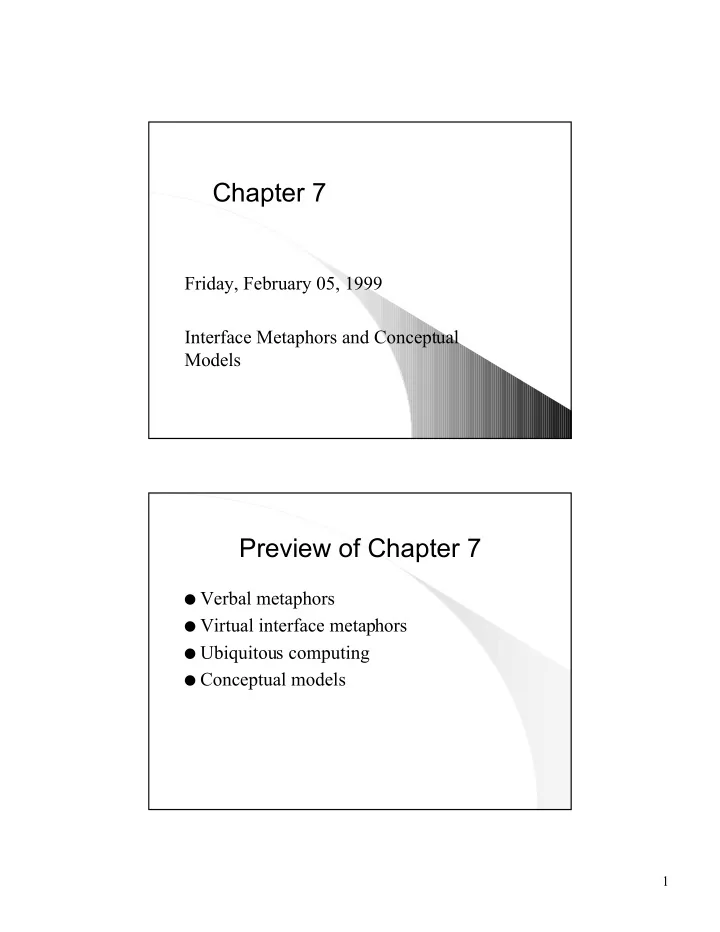

Chapter 7 Friday, February 05, 1999 Interface Metaphors and Conceptual Models Preview of Chapter 7 l Verbal metaphors l Virtual interface metaphors l Ubiquitous computing l Conceptual models 1
Metaphors l Metaphors convey an abstract concept in a more familiar and accessible form l Metaphors are everywhere in life Goal l The goal of this chapter is to describe how the cognitive principle of metaphorical reasoning has been applied to user interface design. l To what extent do metaphors help the users interact with computer systems 2
Verbal Metaphors l Verbal metaphors can help users understand a new system Ð by explicitly providing a verbal metaphor in training Ð by describing the aspects of the system as a computer system Verbal Metaphors Word Processor vs Typewriter l Foss et al. (1982) used an Òadvance organizerÓ to describe how files were created, stored and retrieved in terms of a filing cabinet. l Results were positive for those who had been presented the verbal metaphor. 3
Virtual Interface Metaphors l Xerox Star - Apple Lisa - Macintosh - based on the physical office Ð paper Ð folders Ð filing cabinets Ð in/out trays Virtual Interface Metaphors l Composite metaphors Ð Windows Ð Scroll bars Ð Menus l Do they exist in real life? 4
Ubiquitous computing l Inivisibly enhancing the world that already exists Ð Dishwashers Ð Microwave Ovens Ð VCRs (possibly) Ð Bill Gates house Conceptual Models l Design model Ð The way in which the designer wanted the product to be perceived l User model Ð The way the user preceives the product 5
Summary l Verbal metaphors are analogies based on familiar knowledge l Interface metaphors combine a familiar domain with the system structure l Composite interface metaphors are combinations of multiple and partial models of familiar domains Summary l There are several kinds of interface metaphors, although the most common is desktop l Users and designers may have different conceptual models of the same system l A main goal in interface design is to relate the design model to the user model 6
Summary l Ubiquitous computing systems have invisible interfaces that can be effortlessly used 7
Recommend
More recommend